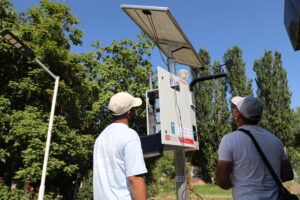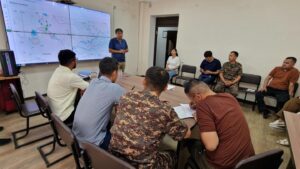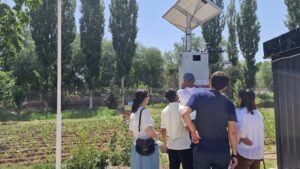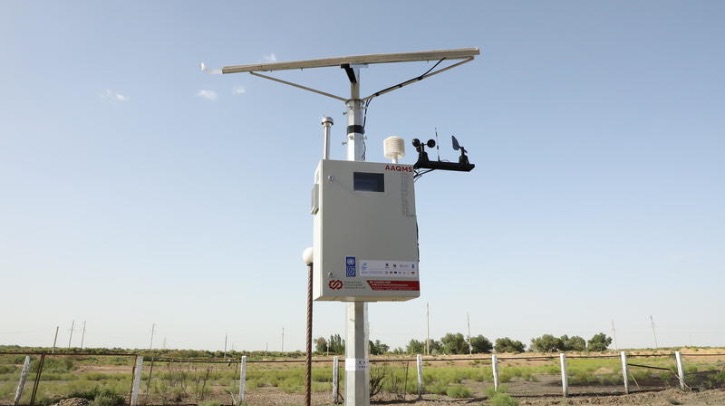The UNDP has installed 17 automatic air quality monitoring stations in the Aral Sea region to protect the health of more than two million residents and inform decisions in environmental policy.
Powering climate measurements
The new network provides 24/7 automatic measurement of key air pollutants: hydrogen sulfide (H₂S), ozone (O₃), nitrogen dioxide (NO₂), ammonia (NH₃), carbon monoxide (CO), sulfur dioxide (SO₂), as well as fine particulate matter PM2.5 and PM10. The meteorological parameters it records include wind speed and direction, humidity, temperature and atmospheric pressure.
To ensure the sustainability of the project, each station is completely autonomous due to their solar panels. This is also to ensure uninterrupted operation even during dust storms characteristic of the region.

Key partners
The project has been implemented by the United Nations Development Programme with financial support from the UN Multi-Partner Trust Fund for Human Security for the Aral Sea region in Uzbekistan (MPTF-4), Uzbekistan, Norway, the European Union, Finland, South Korea, Germany, and the Alwaleed Philanthropies charitable organization.
The Ministry of Ecology, Environmental Protection and Climate Change, Uzhydromet, the Ministry of Health, and the Ministry of Agriculture of the Republic of Uzbekistan can now exchange data in real time and develop preventive measures to inform residents and farmers about potential adverse consequences.
For healthcare workers, the network will function as an early warning system, preventing exacerbations of respiratory diseases. Agricultural enterprises and farmers will receive data on climatic conditions to optimize field work. Hydrological services will use the information to develop environmental protection programs, environmental organizations use it for scientific research. Meteorological services are also expected to improve forecast accuracy thanks to additional atmospheric data.

Local involvement
The project has been implemented within the framework of the initiative ‘Building knowledge and skills of local partners and communities to address environmental insecurities through innovative air, land and water management solutions in the Aral Sea region’. 
The strategic placement of monitoring stations near educational institutions and in residential areas with high population density is intended to reflect the principle of ‘Leave No One Behind’. According to the UNDP, this network will enable the integration of observation results into global climate change programs and compare indicators with international standards.
As part of the project, comprehensive training has been conducted for national specialists in the operation and maintenance of monitoring stations. Local personnel have been trained in the principles of working with high-precision equipment, sensor calibration procedures, data interpretation and timely response to exceeding maximum permissible concentrations of pollutants.

Alisher Utemisov, UNDP program manager in Karakalpakstan, noted, “Climate solutions are investments in human capacity development and the environment. In the Aral Sea region, by integrating climate goals with national development plans, we create synergy – strengthening people’s resilience to climate change, improving their health, expanding their opportunities. Every farmer who understands climatic conditions can not only protect their harvest but also ensure food security for the entire community. This is the path to just and sustainable development.”
For more of the top insights into the future of air quality monitoring, read Meteorological Technology International’s exclusive Tech Insider feature



